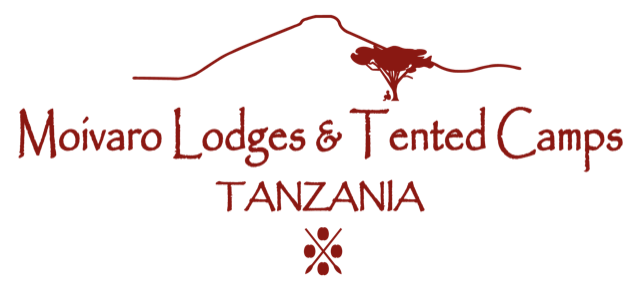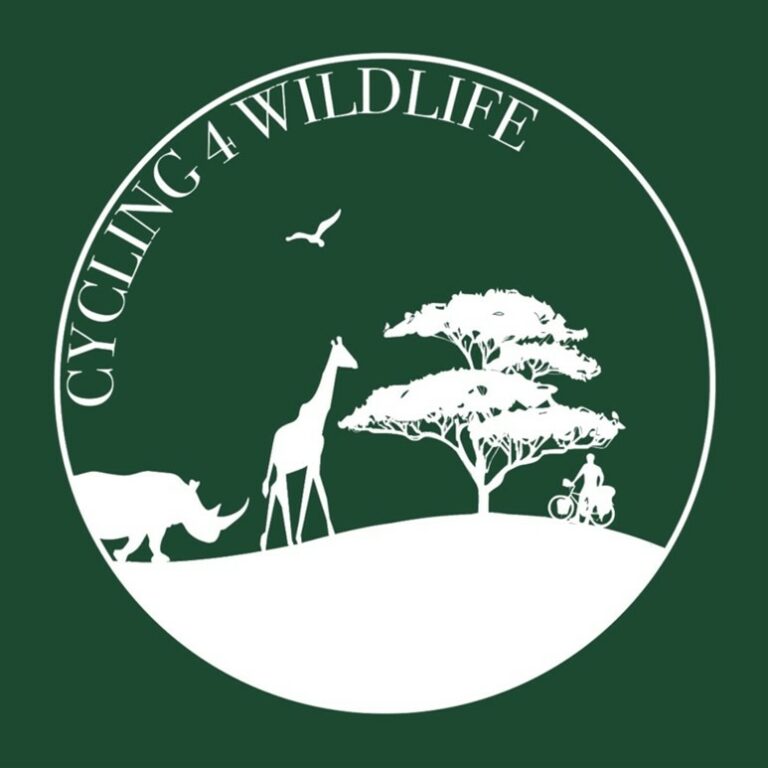The first thing we noticed when we cycled from the border to the town of Rumphi was the plastic. After Rwanda, plastic pollution was a common sight, but nowhere was it as rampant as in Malawi. In the villages we cycled through, thousands and thousands of blue plastic bags were piled on top of each other. The inhabitants didn’t seem to notice, but they were living on a massive rubbish dump that was growing by the day.
Because no official was to be found at the border, we were cycling to Rumphi with neither an exit stamp from Zambia nor an entry stamp from Malawi. When we finally met the Malawian border officer in Rumphi, he looked at our passports but said he couldn’t help us. Since we didn’t have an exit stamp, he explained, he couldn’t give us an entry stamp, as he lacked the authority to do so. ‘But,’ he said, ‘it is no problem. You can just go to Mzuzu. There they have the authority to stamp your passports’. Fascinated by the strict adherence to protocol in a continent where protocol is mostly non-existent, we continued our journey to Mzuzu. When we got to the immigration office, around 11:30 on the next day, the office was just closing for a lunch break. ‘Come back at half 1,’ we were told. When we got back two hours later, we were helped by three friendly staff members. At half past 4, we stood outside with four stamped passports.
At this point, we still had to cycle 45 kilometres to Nkhata Bay, on the shore of Lake Malawi. Luckily, the ride was mostly a descent, and an absolutely stunning one. In Nkhata Bay, we stayed in a backpacker’s hostel full of European and American travelers. After weeks of not seeing other white people other than the odd overlander on the road, it felt strange being among a group of western teenagers on their gap years. Adding to the touristic experience, an artist by the name of Michael Mountain performed for us after dinner. A Bob Marley look-a-like, we expected the standard tracklist of Buffalo Soldier, Three Little Birds and No Woman, No Cry. But to our surprise, Michael Mountain performed his own discography, including songs like Inflation (“It’s a bad situation”) and How Big is Malawi Lake? (“So big! So big!”). These impressive lyrics would remain stuck in our heads for a very long time, haunting us on the hundreds of kilometres of tarmac where one’s mind is an easy prey for annoying yet catchy songs.
After leaving Nkhata Bay, it was an comfortable, mostly flat ride to Nkhotakota. When we arrived here, we were welcomed by a committee of two rangers, Paul and Limbani, a drone pilot named Hastings, and John, Nkhotakota’s funding & reporting manager. John greeted us with a smile from ear to ear, an expression we soon found out was his trademark. With a drone (sadly not our own) flying over our heads, we cycled through the park to the youth hostel, a beautiful tented camp where we would spend four nights. After a quick shower, we had dinner at the park’s environmental education centre. Here we met Linda, the lovely waitress, and Godfrey, the chef. The two of them served us an incredible dinner and, over the three days we stayed in the park, would become good friends of ours. Upon completing our dinner, we returned to our camp, where we settled by a warm fire under the radiant Milky Way. After weeks of cycling through the chaos of African cities, towns and villages, it was great to finally be in the bush again.
The next morning, as Linda and Godfrey spoiled us once more with a full English breakfast, we met David Nangoma, the park manager. With his grey hair and low and thoughtful voice, David seemed wise and had an infectious air of calm about him. The latter was actually quite remarkable, as Nkhotakota was in the midst of an audit of the park’s operational performance. Once every five years, David explained, all the parks under AP’s management are subject to an audit in order to maintain high standards throughout its portfolio. Naturally, the audit had priority over four visiting Dutch boys, so it was completely unnecessary when David apologized for not being able to spend much time with us. In fact, we felt very lucky to visit the park during the audit, as we got to meet a group of inspiring people from across the continent. The audit committee consisted of high-ranking AP managers as well as people from without the organisation to ensure an unbiased outcome. Among them was a particularly interesting man named Hugues. Coming from Benin, Hugues is AP’s regional manager for West Africa, supervising the park managers here. Hugues’ story is impressive: he started his career as a field ranger in Benin’s Pendjari National Park and climbed up all the way to senior management position, completing two masters’ degrees in the process. Other members of the audit committee were equally remarkable people from South Africa, Mozambique and Cameroun.
Just after meeting park manager David, a small yet robust-looking white man dressed in very short shorts came up to our table. Looking at his appearance, we knew this man could be nothing but South African, and when he introduced himself as Craig, his accent confirmed our presumption. Craig was the field operations manager at Nkhotakota, a mammoth task at any time, but especially during an audit. Fortunately for the park, Craig exuded competence, and from the conversations we had with the audit committee it soon became clear that Nkhotakota would pass the audit with flying colours. Later, we had the pleasure of meeting Jimmy, an experienced guide who had worked in all of Malawi’s major parks and even in Zambia’s South Luangwa National Park. In the afternoon, Jimmy took us on a game drive and showed us Tongole, a beautiful lodge on the edge of a river, where we drank a refreshing gin & tonic as we watched dozens of Little bee-eaters around us sitting perched on overhanging tree branches, then suddenly taking off to snatch flies in mid-air before returning to their perch. On the drive back to camp, we didn’t see much game, but what the park lacked in terms of game viewing, it more than compensated with its breath-taking scenery of ancient Miombo woodland and pristine Afromontane forest.
In the evening, after dinner with the audit committee, we had a few beers with Craig. Prior to joining AP, Craig was the head ranger for one of Kruger’s 22 sections. At a time when the Kruger was losing more than a thousand rhinos every year with complicity from South Africa’s political elite (source), he was responsible for law enforcement in one of the hardest-hit sections of the park. Although I won’t go into detail about our conversation with him that evening, I can tell you that Craig’s work under these incredibly difficult circumstances was nothing but exceptional. After having worked in Nkhotakota for a couple of years, Craig is now joining Zimbabwe’s Matusadona National Park, where he no doubt continue to have a major impact.
The next day, Jimmy took us for a walk. The weather was humid and we didn’t see much, but a few nice birds, including a Böhm’s bee-eater, offered some exciting moments. After the walk we were spoiled by Godfrey and Linda with rice and goat meat. In the afternoon we did some writing and editing. Then Godfrey and Linda spoiled us again, this time with rice and chicken.
On our last day in Nkhotakota, Jimmy was going to take us to see Chimwala Mountain, in the west of the park. But just before leaving, Craig hijacked the plan and took us along on a part of the audit. Squeezed in a Land Cruiser with some of AP’s top brass, we inspected the fence along the park’s southern boundary. Fences are controversial conservation tools: perceived by many as a means to keep poor, local communities out of areas where for generations they have harvested essential resources such as firewood and protein, fences have become synonym with exclusion, oppression and even racism, nowhere more so than in South Africa. But, as we were explained by David, fences do not just serve to keep people out. More importantly, they serve to keep animals in. Recently, a tragic incident demonstrated just how important this is.
Since the historic introduction of 500 elephants in 2017, human-elephant conflict has been a recurring problem in Nkhotakota. A newly-built Kenya fence does a great job to keep the elephants inside the park, away from people and their crops, but it only works when charged with a high-voltage electrical shock. Unfortunately, the fence is often sabotaged by people trying to break into the park in search of firewood, bushmeat, or gold. Without its electrical charge, elephants pull the fence’s poles out of the ground like tent pegs. A week before our arrival, such an event led to an incident whereby a woman was severely injured by an elephant after she tried to defend her field of tomatoes. When we were in Nkhotakota, she was still in the hospital, fortunately in a stable condition. Over the years, similar incidents have been a source of continuous tensions between the park and neighbouring communities. One of those even turned violent, when two rangers were molested by an angry mob after a man was killed by an elephant. Both were lucky to walk away with their lives.
If anything, these incidents show the need for environmental education programmes for people living around these conservation areas. Personally, we knew environmental education was important, but up until this moment, the concept had remained somewhat vague to us. Now, as we talked about the very tangible problems that result from a lack of it, it suddenly made sense why community development, of which environmental education is a vital part, constitutes one of the core pillars of AP’s management strategy. Perhaps nowhere is environmental education more important than in Malawi, the third poorest country in the world (the only reason Malawi is not the poorest is the periodical influx of foreign aid following natural disasters such as cyclone Freddy earlier this year). With a population of 21 million depending mainly on charcoal for fuel, deforestation in Malawi is rampant. Add to that the immense impact of plastic pollution, and what you get is an ecological wasteland with a few islands of biodiversity in the form of wildlife reserves and national parks. As Malawi’s population is expected to double within the next two decades, the pressure on the country’s remaining natural resources will only intensify. Solely through large-scale education programmes and community engagement will it be possible to preserve the last remaining bits of wilderness the country still harbours. Fortunately, African Parks is making a great effort to do exactly that. When we rode out of Nkhotakota on the morning of the 12th, a bus full of schoolchildren was going in the other direction. In Liwonde, our next destination, we would find out just how impactful such visits can be.

Nkhotakota’s western boundary. One can clearly see man’s devastating impact.

A typical village in Malawi. Especially the small, blue plastic bags are found everywhere. “Our national flower”, as Craig referred to them somewhat cynically.

















